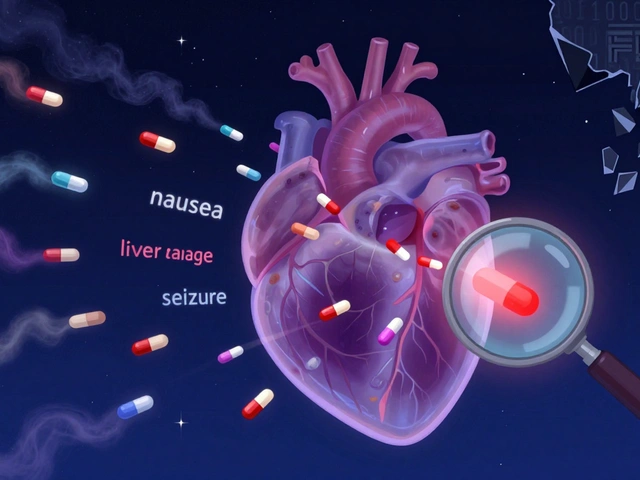Keflex (cephalexin) allergy — how to spot it and what to do
Keflex is the brand name for cephalexin, a common oral cephalosporin antibiotic. Most people tolerate it fine, but some have allergic reactions. Knowing the difference between normal side effects and a true allergy can keep you safe and help you get the right treatment faster.
Recognizing a Keflex allergy
Allergic reactions usually show up soon after taking the first doses, but sometimes after a few days. Watch for: itchy hives or rash, facial or throat swelling, wheezing or trouble breathing, dizziness or fainting, and intense stomach upset with signs of an allergic response (less common). A mild rash that itches and appears a few days in can be a delayed allergic reaction. Severe signs like breathing trouble or fainting need emergency care—call emergency services right away.
Not every unwanted effect is an allergy. Nausea, diarrhea, or mild stomach pain are common side effects and not immune reactions. If you’re not sure, ask a clinician—don’t assume.
Penicillin allergy and cross-reactivity
Many people worry Keflex will cause a reaction if they’re allergic to penicillin. Older numbers said cross-reaction rates were high, but modern studies show the risk is much lower, especially for serious reactions. The exact chance depends on the type of penicillin allergy you had. If you previously had anaphylaxis or other severe immediate reactions to penicillin, doctors usually avoid cephalosporins unless an allergy specialist tests you. If your penicillin reaction was a mild rash long ago, a cephalosporin like Keflex might still be safe—but only after a medical check.
If you develop a suspected allergy to Keflex, stop the drug and contact your healthcare provider. For mild rashes, a doctor may suggest antihistamines and switch the antibiotic. For severe reactions—swelling, trouble breathing, fainting—use epinephrine if available and get emergency care immediately.
Allergy testing can help. Skin testing is reliable for penicillin and can guide safe choices. There’s no standard skin test for every cephalosporin, but an allergist can do supervised oral challenges or desensitization if you need a specific antibiotic for a serious infection.
If Keflex isn’t safe for you, common alternatives depend on the infection: azithromycin or clarithromycin for some respiratory infections, doxycycline for certain skin or tick-borne infections, clindamycin for serious skin infections, or trimethoprim-sulfamethoxazole for others. Your doctor will pick an option based on the bug, local resistance, and your medical history.
Final tip: always tell every provider about your drug allergies and what happened. Ask for an allergy card or update your medical record. That simple step prevents mistakes and helps you get safer, faster care when you need antibiotics.
Alternatives to Keflex: What to Prescribe If Your Patient Is Allergic
Stuck when your patient breaks out in hives after Keflex? This article digs deep into what to prescribe instead. Find out how cross-reactivity really works, which antibiotics are safest, and how skin testing protocols can clear confusion. With practical facts, real clinical tips, and a handy reference chart, you'll be prepped to make fast, evidence-based choices when Keflex isn’t an option.






